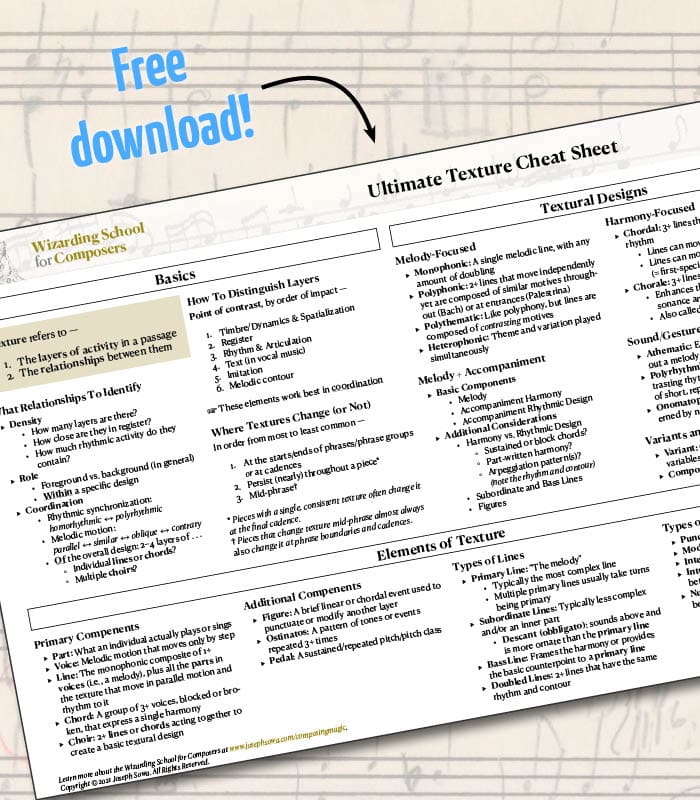So what DO onions and music (and ogres) have in common?
. . . Layers!

Layers are the key component of “melody and accompaniment” textures I wrote about earlier this week.
This week I’ve been thinking a lot about texture — the layers of activity in a passage of music and the relationships between these layers.
Composers spend a lot of time obsessing over harmony . . .
Here’s the thing . . .
As powerful and transcendent as harmony is, it’s hard.
- It’s hard for musicians to learn. (Hello! It takes years!)
- It’s hard for listeners to articulate what they’re hearing. (Even pros without perfect pitch struggle to follow modulations!)
Texture, on the other hand, . . .
Texture is both easy to learn and easy to perceive, for composers and listeners alike.
Perhaps that’s why this is why texture is the best compositional secret that music school doesn’t tell you.
But if you want a powerful tool that you can apply fast that makes a BIG IMPACT on listeners’ perceptions, texture is your go-to.
As part of the Wizarding School for Composers, I’ve put together a handy cheat sheet that has all the basic concepts and variables on ONE page.
Fill out the form below to get your copy . . .

Is your music missing that extra “something”? Texture is the best-kept secret at music schools. It's how you can take your ideas and make them pop and sparkle. I cover all the essential concepts in this free, one-page cheat sheet. Enjoy!


